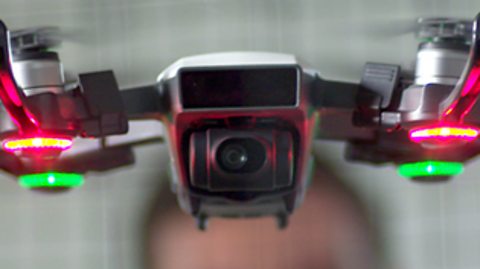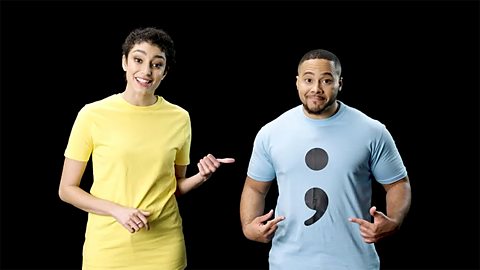Strange but true!
In 2017, an anonymous vigilante spent their nights travelling round the streets of Bristol with their self-made 'apostrophiser'. Their mission: to correct the city’s poorly punctuated signs.
Introduction to apostrophes
Apostrophes may be small but they play a vital role in clarifying information within a sentence. It can be very easy to misuse apostrophes in your writing so follow these rules in order to conquer those common mistakes.
Apostrophes are used for two main jobs, showing possessionOwnership or the state of owning something. and showing omissionThe removal of letters when creating a contraction..
Apostrophes for possession show that a thing belongs to someone or something. For example Anna**’s book or the school’**s logo.
Apostrophes for omission show where something, usually a letter, has been missed out to create a contractionThe shortened form of a group of words that omits certain letters.. For example, haven't rather than have not.
Video about how to check your apostrophes
How to check your apostrophes are correct
Apostrophes for possession
For most nouns you just need to add an apostrophe and an s to show that something belongs to a person or thing. It's a handy tool because instead of saying the bedroom of Luca, the apostrophe and the s make it Luca’s bedroom. Much easier!
Here are some more examples: the student’s bravery, the headteacher’s assembly, the team’s performance.
When the noun is plural and already ends in s, move the apostrophe to the end, like this: the students’ behaviour or dancers’ routines. Put the apostrophe at the end so that we know there are multiple students or many dancers being referred to.
Pick the correct sentence
Apostrophes for omission
Omission means leaving something out, and we often do this with letters or groups of letters in words. The apostrophe shows where this has happened.
Sometimes we join two words together, like would've for would have. This is known as a contraction and the apostrophe in this case shows where the letters ha have been removed.
Examples of contractions
| I am | I’m |
| you are | you’re |
| we will | we’ll |
| he is | he’s |
| she had | she’d |
| who is | who’s |
| can not | can’t |
| will not | won’t |
| let us | let’s |
Write the contraction
It’s or its?
These two words cause confusion because they break the rules! Here’s what you need to remember: it’s with an apostrophe means 'it is' or 'it has'. In the sentence "It’s a good idea" it works just like an ordinary contraction.
But its (without an apostrophe) means 'belonging to it’, the bird spread its wings. The reason its' doesn’t need an apostrophe is because it is a possessive pronounA pronoun indicating possession (mine, yours, theirs, his, hers).. Like other possessive pronouns (hers, his, yours, theirs) an apostrophe is not required as they already indicate possession without an apostrophe.
Choose it's or its
Common mistakes
One of the most common mistakes that people make when it comes to apostrophes is using them in plurals ending in an ‘s’. For example, we are open Monday’s to Friday’s. In order to pluralise a regular noun all you usually need is to add an ‘s’. Therefore, the correct version is we are open Mondays to Fridays.
Similarly, apostrophes are not needed in abbreviations like DVDs or HGVs. This same rule also applies when using numbers like the 1920s or the over 60s.
Another common mistake is forgetting that the contractions 'should’ve', 'would’ve' and 'could’ve' are shortened versions of 'should have', 'would have' and 'could have'. The clue is in the endings: 've' comes from 'have' not 'of' but people often make this mistake because the letter sounds are so similar.
Key points
Remember
It's always worth checking the apostrophes in a piece of writing, as missing one – or adding one that isn’t needed – is the most commonly made punctuation mistake.
Test your knowledge
Fill in the gaps
Quiz
More on Punctuation
Find out more by working through a topic
- count6 of 6

- count1 of 6

- count3 of 6
